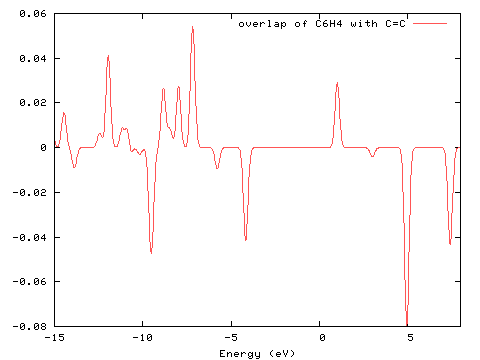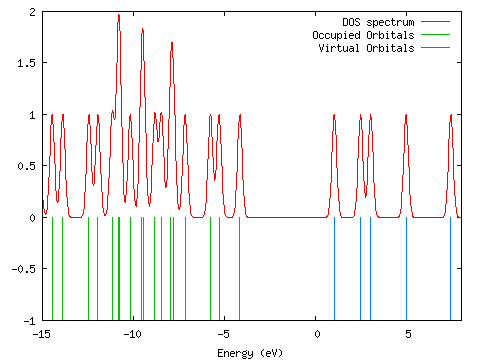

Instead of drawing a DOS curve, you may prefer to use a more straightforward depiction of the breakdown of molecular orbitals between various groups in a molecule. The image below was created using Microcal Origin (for Linux, try Scigraphica or Grace). I set "Use existing orbital_data.txt?" to TRUE, and altered the values of start and end until I was happy ("Orbitals" start=-15, end=8, FWHM=0.3, "Use existing orbital_data.txt?"=TRUE PhCCCC_pop.out):Ī nicer image can be created using spreadsheet software, or a program such as Microcal Origin, and the file gausssum2.1/DOS_spectrum.txt. As a result, I wanted to change the start and end point of the spectrum, but I did not want to recalculate all of the contributions of the groups. The initial DOS spectrum created by GaussSum did not include any of the virtual orbitals. (Note that these columns are tab-separated and so can be imported easily into spreadsheet software.) The so-called 'accurate values' should be ignored, although they are required for the "Electronic transitions" option to calculate changes in electron density. The HOMO is about 50/50 C 6H 4 and divinyl. This time, orbital_data.txt contained more information (see below for information on the frontier orbitals). Next, I created a file called groups.txt in the gausssum2.1 subdirectory, which contained the following lines:įinally, I used GaussSum to calculate the molecular orbital contributions again ("Orbitals" defaults PhCCCC_pop.out, gausssum2.1/groups.txt). This required a single point energy calculation with the keywords POP=FULL IOP(9/33=1,9/36=-1).

First of all, I needed to make Gaussian output orbital overlap information and information on the molecular orbital coefficients.

GaussSum can use Mulliken population analysis to do this (please be aware that Mulliken population analysis has some severe shortcomings). I wanted to describe each molecular orbital in terms of a percent contribution from the benzene portion, and a percent contribution from the divinyl portion. The data used to draw this graph is contained in gausssum2.1/DOS_spectrum.txt. Information on the frontier orbitals is shown below.Ī density of states diagram was convoluted from the molecular orbital data ("Orbitals" DOS, start=-15, end=8, FWHM=0.3 PhCCCC_gopt.out). Molecular orbital information was written to the orbital_data.txt file in a subdirectory called gausssum2.1. I extracted the molecular orbital information from the output file of the geometry optimisation ("Orbitals" defaults PhCCCC_gopt.out). The geometry optimisation proceeded smoothly to an energy minimum as shown by the graph below ("Monitor GeoOpt" defaults PhCCCC_gopt.out). The progress of the geometry optimisation was also monitored during the calculation. The line is heading towards zero, which indicates that the SCF is converging. Complete output file: ĭuring the initial SCF calculation, I ran GaussSum ("Monitor SCF" defaults PhCCCC_gopt_partial.out) to see whether the calculation was converging.I opened the Settings dialog box, by clicking on File/Settings, and verified that the location of the Gnuplot executable was correct by clicking on the Test button. GaussSum: Worked Example Worked Example DescriptionĪ study of the electronic structure and vibrational spectrum of 1,4-divinyl-benzene (at the B3LYP/STO-3G level of theory) using Gaussian03W.


 0 kommentar(er)
0 kommentar(er)
